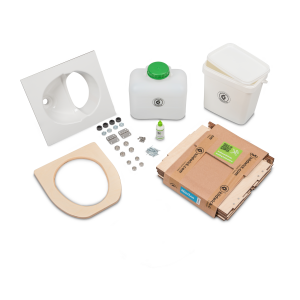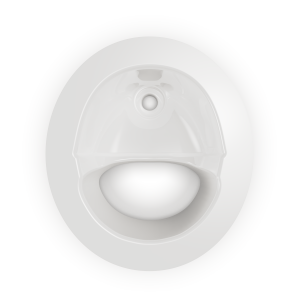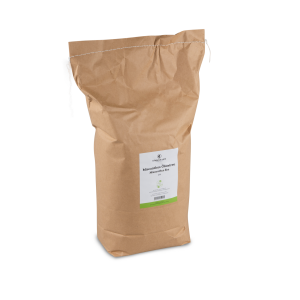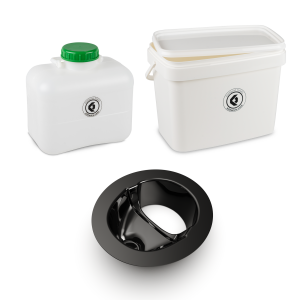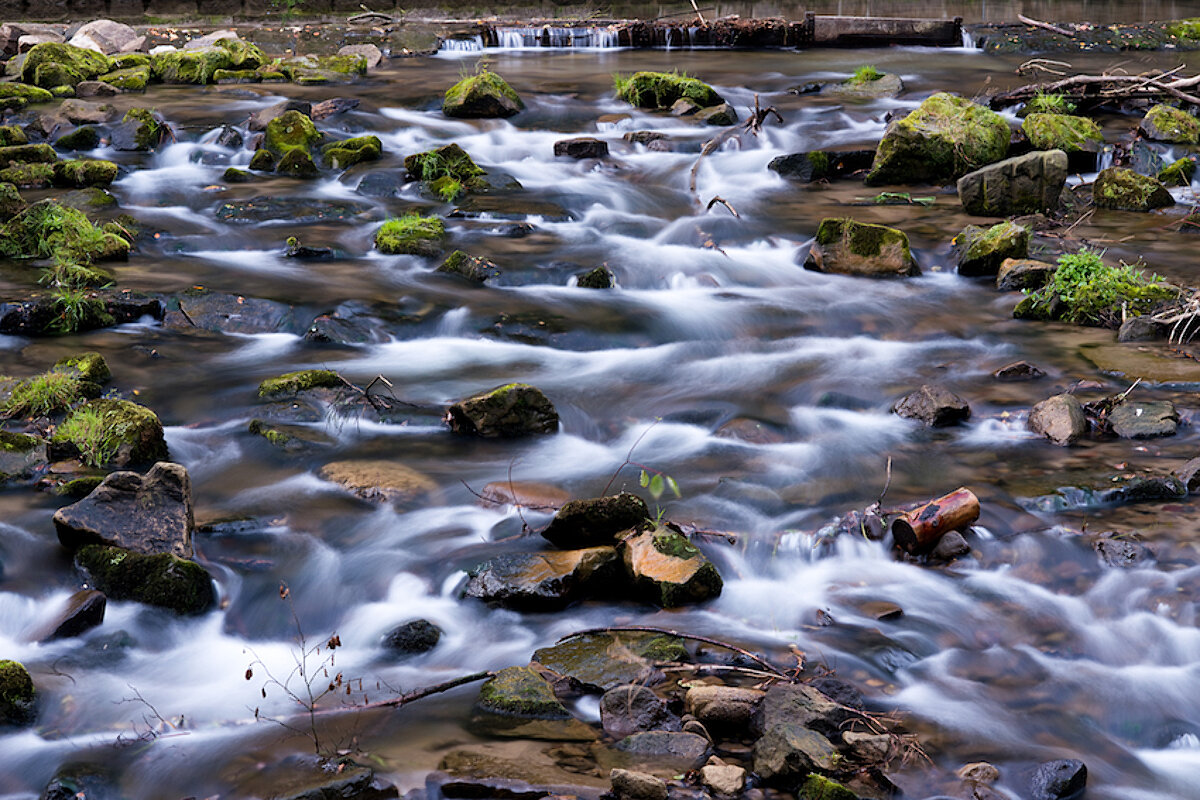© Kildwick / Florian Manhardt
We rely on it several times a day. Discreetly and reliably, it helps us keep our hygiene standards high. It would be hard to imagine life without it. It is time to thank it for its tireless service. On the occasion of World Toilet Day on 19 November, we say:
Thank you Toilet! You are just great!!
Because being able to use a toilet is far from being a matter of course worldwide. Many people have to do without the luxury of their own toilet. That's why we want to give toilets the attention they deserve. And at the same time, we want to take a look behind the scenes of how we use toilets, which we take so much for granted.
The issue with water: no limitless pleasure
Today, let's start by looking at how water came to the toilet, or the toilet to water, and why it makes sense to look for alternatives.
Once upon a time there was a toilet – from 00 to 100
Even the Romans were concerned about the practical disposal of excreta. Here, going to the toilet was a communal experience, when up to 60 people gathered at the public latrines for a cheerful exchange. Urine and faeces were flushed into a sewer even then.
In the Middle Ages, however, this idea was literally thrown out the window again and one had to be careful in the alleys not to get caught by a falling heap.
It was not until the middle of the 19th century that there was a significant change and the water closet was installed in the first houses. By the end of the century, water connections, and thus also the toilet, were already standard in the homes of city dwellers. Meanwhile, people in rural areas were still keeping their heads above water with the outhouse. But here, too, it wasn't long before it was a case of: water march!
Out of sight, out of mind – our water consumption put to the test
A few years have passed, but the toilet system has hardly changed. Modern cisterns save a little water, but a normal flush still requires at least 9 litres. When the economy button is used, 3 litres simply disappear down the pipe.
Since a healthy person uses the toilet up to eight times a day, this quickly adds up to an unbelievable amount of water that is only used to accompany our excrement on its way to the sewage treatment plant. Extrapolating, one person uses 12,775 litres of water a year just by going to the toilet.
That's a number that's hard to imagine, so we've calculated it down: Germans use an average of 35 litres a day to flush the toilet. That's almost four cases of water a day, or 120 cases a month that we just dump down the toilet - imagine if you had to haul it all in first.
Not every wastewater is the same – from valuable to harmful
Wastewater consists of only one percent dirt, 99 percent is water. A distinction can be made between different types of wastewater.
Black water is produced when we go to the toilet. It contains only human excreta and is therefore actually very valuable.
Yellow water also has high potential, because it consists only of urine and water. It is therefore a purely natural product that can be collected and recycled, for example, through separation toilets.
This no longer works with grey water. This water has been contaminated by washing dishes, bodies or clothes. The contamination of the water is moderate, so it can be recycled relatively easily.
Last but not least, there is brown water, in which faeces, urine, grey water and toilet paper come together. Treatment is correspondingly complicated.
From dirty to clean – the long road to water purification
The polluted water is not completely gone. It ends up in the sewage treatment plant. Here it goes through several treatment processes.
First, it is mechanically cleaned by grids and screens that remove coarse dirt. The first substances settle to the bottom.
In the primary clarifier, the water flow is reduced, so that even the finest dirt particles sink to the bottom. Oils and plastics settle on the water surface in this step and can be skimmed off.
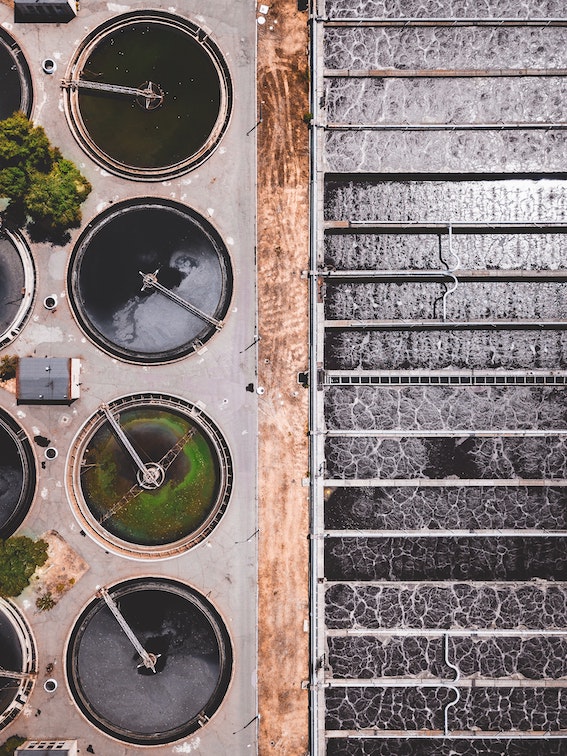
© Ivan Bandura on Unsplash
Quite clean, but still far from ecological

© Florian Manhardt
After clarification, 97% of the water is free of pollutants and thus clean enough to be released into the natural water cycle. The rest is left to nature. Unfortunately, residues of medicines and microplastics keep ending up in the water.
Of course, the whole process also draws an enormous amount of electricity. Experts estimate that sewage treatment plants consume up to 3% of the world's electricity. Above all, the aeration system and the pumps are energy guzzlers.
What's more, additional water is consumed in the treatment process.
Less is more - water is not an endless resource
If we now also look at the fact that water is becoming scarce from time to time due to climate change, it quickly becomes clear that this system is not ideal. Water is being wasted that, in case of doubt, should rather be used as drinking water.
In the face of resource scarcity, some companies are already working on effective and sustainable toilet flushing systems. Japan in particular is showing itself to be a pioneer here. For example, TOTO's "Tornado Flush" is said to use less water thanks to its powerful flushing technology. Other studies are looking at how nutrients can be filtered out of wastewater and reused in a sensible way.
The solution could be much simpler. A urine-diverting dry toilet uses almost no water (except for regular cleaning) and also makes it possible to utilise the valuable raw materials contained in our excreta simply and without much technology.
Every person in Germany uses an average of 35 litres of water per day. That doesn't sound like much, but it adds up quickly.
Even if a composting toilet is only used on holiday, for example in a camper or van, a family of four can save almost 2,000 litres of water in 14 days.
We celebrate every drop saved! So let's do it together and protect this precious resource every day.
